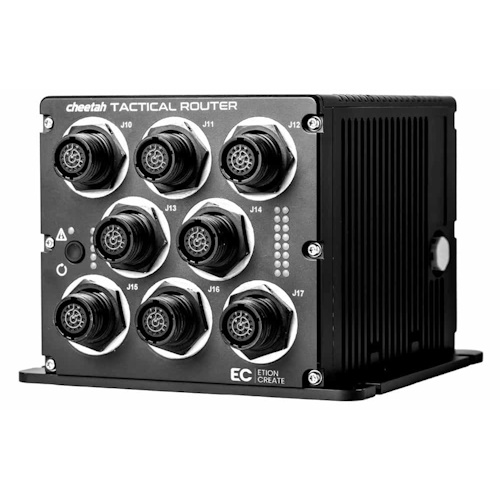As usual, my poor old noggin is spinning like a top. I’ve just learned more than I ever wanted to know about the problems with the existing PC/104 and VITA 74 (VNX) standards, along with the advantages promised by the recent introduction of the VITA 90 (VNX+) offering.
Before we plunge into the fray with gusto and abandon (and aplomb, of course), let’s take a step back to make sure we’re all tap-dancing to the same skirl of the bagpipes. The term “SWaP-C” refers to an engineering evaluation framework primarily used to guide the design of systems and products, especially those intended for complex environments such as aerospace, defense, autonomy, and other resource-constrained domains. Its core goal is to balance four critical factors:
- Size: A smaller physical footprint (2D/area and/or 3D/volumetric) is often essential for integration into limited spaces.
- Weight: Lighter systems improve mobility, efficiency, and payload capacity.
- Power: Lower power consumption reduces heat, improves reliability, and extends mission duration.
- Cost: Including initial procurement, integration, lifecycle, and operational expenses.
As a point of interest, deep in the mists of time, this started out as SWP (Size, Weight, Power). Then the ‘a’ was added, giving us SWaP (Size, Weight, and Power). Still later, the ‘-C’ came along when cost was recognized as a critical factor in design optimization. A more recent framework extension, SWaP-C² (Size, Weight, Power, Cost, and Cooling), explicitly incorporates thermal management into the mix. This is particularly relevant for compact systems that generate more heat in tight spaces.
There’s so much to all this that it can bring even a grizzled old engineer to his knees, which explains why I’m currently kneeling as I type these words. Let’s see if I can boil everything down into a form that makes sense (keep your fingers crossed).
Before the 1990s, embedded computing was akin to the Wild West. Every company rolled its own boards, connectors, and interfaces. If you bought from vendor A, you were locked into vendor A’s ecosystem. Interoperability wasn’t even a pipedream. That changed with the arrival of PC/104, which introduced the industry to its first widely accepted, modular small form factor.
When the PC/104 Consortium was formed in 1992, it introduced a stackable approach based on the ISA bus. At just under 4 inches (~10cm) square, PC/104 modules could be stacked like Lego bricks, eliminating the need for bulky backplanes. Over time, revisions introduced PCI, PCIe, and higher-speed serial interfaces, while maintaining backward compatibility.
PC/104 proved that small form factors could be standardized, ruggedized (to a degree), and supported across multiple vendors. However, as defense and aerospace applications demanded higher performance and greater ruggedness, PC/104 began to show its limitations.
Enter VITA 74, better known as VNX. Launched under the VITA Standards Organization in 2010, VNX was designed from the ground up for SWaP-constrained platforms like UAVs and ground vehicles. Instead of just evolving the PC/104 stack, it took inspiration from VPX (VITA 46), scaling down those concepts into a credit-card-sized module.
Did you spot what I just did there? I casually dropped “VPX” into the conversation as though you knew what I was talking about (welcome to my world, because this sort of thing happens to me all the time). I’m afraid this opens another can of worms. It’s a big can, so I hope you like worms.
First, a little background. VMEbus (Versa Module Europa) was introduced in 1981 as a 32-bit backplane bus for Motorola 68000 processors. It quickly became the de facto standard for embedded computing in aerospace, defense, and industrial systems. Throughout the 1980s and 1990s, the VMEbus evolved (with VME64, VME64x, and 2eSST extensions), but remained fundamentally a parallel bus.
By the early 2000s, high-speed serial fabrics (like PCI Express, Serial RapidIO, Ethernet, InfiniBand) were becoming dominant. VME’s parallel backplane couldn’t keep up with the bandwidth needs of radar, signal intelligence, and other military/industrial workloads. This gap set the stage for a next-generation standard.
Around 2003–2004, the VITA Standards Organization (VSO) began developing VPX (VITA 46). VPX replaced VME’s parallel bus with high-speed serial fabrics routed over new multi-gigabit connectors. VPX retained the Eurocard 3U and 6U form factors, maintaining physical compatibility with existing chassis/enclosures while enabling significantly higher throughput (multi-gigabit lanes, differential signaling).
VPX solved the bandwidth issue but introduced new complexity: there were many possible ways to assign signals across the backplane. That flexibility was a double-edged sword—powerful, but not interoperable across vendors. By 2009, system integrators and end users were frustrated. VPX allowed too much “freedom of choice” in backplane and slot profiles, leading to incompatibility.
To solve this daunting dilemma, the OpenVPX Industry Working Group was formed in 2009. This group’s charter was to create a system-level framework for VPX interoperability: defining slot profiles, module profiles, and backplane topologies that vendors could all agree on. The result was OpenVPX (ANSI/VITA 65.0-2010). OpenVPX didn’t replace VPX; instead, it layered system rules on top of it. However, we digress…
By 2021, emerging applications demanded even faster interconnects, SOSA (Sensor Open Systems Architecture) compliance, and future-proofing. That’s when VNX+ (VITA 90) leapt onto the center stage with a hullabaloo of hydraulophones (once heard, never forgotten).
VNX+ retains the small form factor (SFF) footprints of VNX but upgrades everything else: data rates up to 25+ Gbps (100 GbE), better thermal and power management, full SOSA alignment for plug-and-play sensor systems, and expanded I/O, including RF and optical interfaces.
In a crunchy nutshell, VNX+ takes the rugged SFF vision and locks it into the broader open standards movement. It’s no longer just a standalone choice—it’s part of a larger modular architecture strategy.
But wait, there’s more, as this is where the story ties back to OpenVPX, which defines a large, card-cage-style architecture for high-performance embedded systems. VNX+ condenses those concepts into SFF modules. We can think of these as the “little siblings” of OpenVPX. With VNX+, designers can now create hybrid systems in which OpenVPX backplanes provide the heavy lifting, while VNX+ modules extend functionality at the edge. It’s an ecosystem approach: scalable, modular, rugged, and open.
The reason I can waffle on about this as though I have a clue what I’m talking about is that I just enjoyed a brain-stem-storming session with Flemming Christensen, founder and CEO of Sundance Multiprocessor Technology, and Jan Hurter, Senior Product Manager at Etion Create.
Based in the UK, Sundance has established an enviable reputation in rugged embedded computing, boasting deep expertise across OpenVPX, VNX, and PCIe platforms. The company offers custom solutions tailored to the defense and aerospace markets. Hailing from South Africa, Etion Create specializes in advanced embedded and digital systems for demanding sectors like defense, industrial, and cyber.
These two companies have enjoyed a long-time business partnership based on trust, which is highly unusual in any type of technology industry where every facet is typically set in (legal language weasel word) concrete. Through their collaboration, these two players are accelerating innovation in modular, SWaP-C-optimized hardware.
As an example of this collaboration, I would like to introduce the Cheetah Tactical Router, the industry’s first VNX+ (VITA 90)-compliant tactical router that’s specifically designed for edge defense applications such as unmanned systems and vehicle networks. The myriad reasons the Cheetah is so noteworthy include the following:
- Rugged, modular, and customizable: Conduction-cooled, MIL-STD-tested, and expandable with LTE, GNSS, PoE, CAN-FD, sensor fusion, cryptographic modules, and more.
- VNX+ compatibility: Built to VITA 90 standards, enabling high-density rugged interconnects using Samtec SEARAY connectors for 56 Gbps PAM4 performance.
- Flexible network capabilities: Functions as a fully managed Level 2/3 switch/router with support for PoE, time synchronization (IEEE 1588), Linux-based custom software, and critical protocols (OSPF, RIP, DHCP, PPPoE).
- Edge-ready: Designed for use in vehicle systems for situational awareness, intra- and inter-vehicle networks, tactical data links (TDL), HUMS, and more.
The Cheetah Tactical Router (Source: Sundance Multiprocessor Technology and Etion Create)
The Cheetah isn’t just a cool piece of kit (although it is really, really cool)—it’s a proof point for what VNX+ makes possible. This includes the following:
- Modular sourcing: Buyers can mix and match VNX+ modules from different vendors, thereby avoiding proprietary lock-in.
- Edge-extended OpenVPX: You can run a heavy-duty OpenVPX system at the core and “plugin” VNX+ modules like Cheetah at the edge—effectively extending high-performance architectures into the tactical domain.
- Scalable SWaP-C gains: VNX+ delivers high bandwidth, rugged form factors in a small footprint that’s critical for applications like UAVs, unmanned ground systems, and vehicle-mounted electronics.
In short, VNX+ is the key that opens the floodgates to modular, cross-vendor systems that are faster, lighter, and smarter—just like the Cheetah (did you see what I just did there?). So, dare I ask what you think about all of this?
Related


